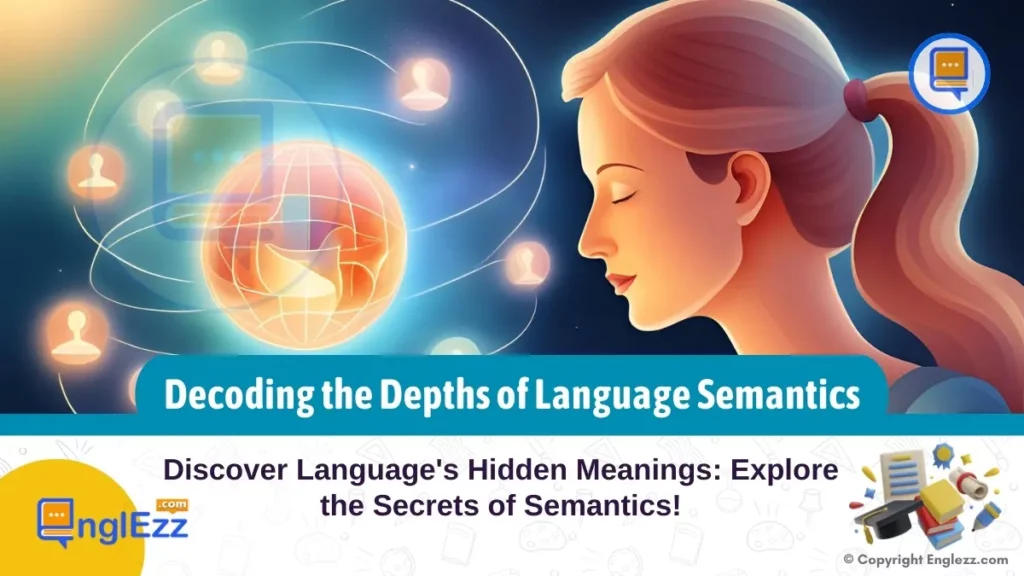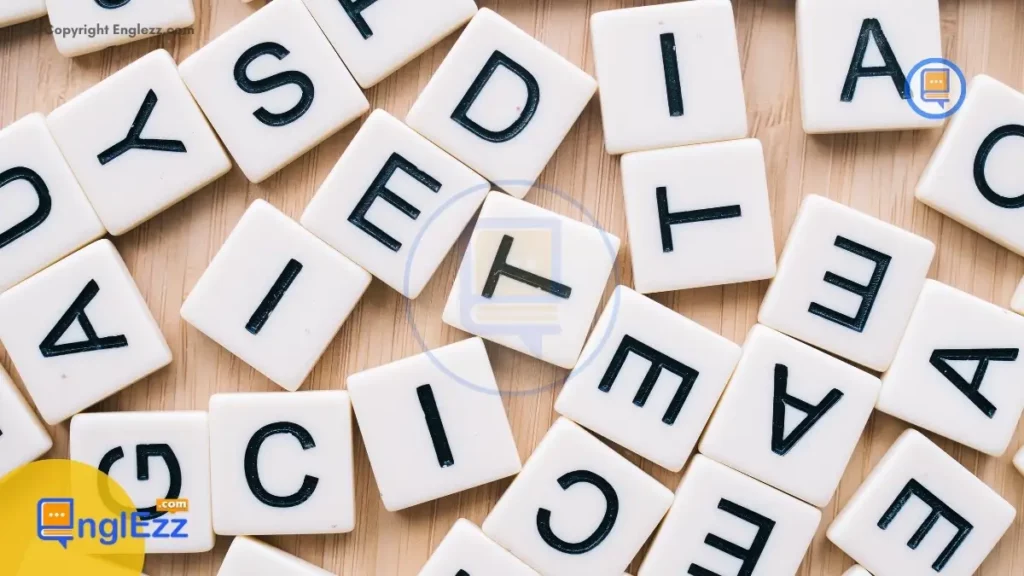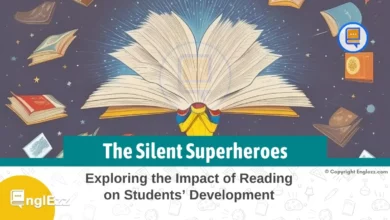Have you ever pondered the hidden complexities that determine the true meanings beneath the words we speak? Language Semantics opens a gateway to unraveling these mysteries, offering insights into how we derive meaning from the words and sentences we use daily. As linguistics enthusiasts, language learners, academics, or researchers, understanding semantics is key to exploring the intricacies of communication. In this ultimate guide, we delve deep into the enchanting realm of Language Semantics to equip you with a comprehensive understanding of its depths.
Table of Contents
- Decoding the Depths of Language Semantics: A Comprehensive Guide
- Exploring Language Semantics
- Semantics vs. Syntax
- Key Concepts in Language Semantics
- Semantic Ambiguity
- Pragmatics and Semantics Relationship
- Applications of Language Semantics
- Embracing Language Semantics for Enhanced Communication
- FAQs (Frequently Asked Questions)
- 1. What is the difference between syntax and semantics in linguistics?
- 2. How does context influence semantic ambiguity?
- 3. Why is an understanding of entailment and implicature important in language semantics?
- 4. What practical applications does language semantics have in today’s world?
- 5. How can learning about pragmatics enhance my comprehension of language alongside semantics?
Decoding the Depths of Language Semantics: A Comprehensive Guide
Language Semantics serves as the cornerstone of linguistic analysis, unveiling layers of meaning woven within our everyday conversations. From deciphering individual word meanings to grasping nuances in sentence structures, semantics guides us through a symphony of communication.

Through this guide, we embark on a journey not only to decode language at its core but also to explore how these semantic intricacies shape human interactions. Join us as we navigate through the vibrant landscape of language semantics – where every word holds a world of significance waiting to be unraveled.
Exploring Language Semantics
Language semantics serves as the cornerstone of understanding the meaning behind words and sentences, playing a pivotal role in deciphering the complexities of human communication. At its core, language semantics delves into the study of how words and phrases convey meaning and interact with one another to form coherent messages. Without a thorough grasp of language semantics, it becomes challenging to truly comprehend the nuances embedded within our everyday conversations.
When exploring language semantics, it becomes evident that there are distinct levels at which meanings manifest. Firstly, lexical semantics focuses on understanding the meanings associated with individual words or lexemes. For instance, consider the word “bark” – depending on context, it could signify either the sound a dog makes or the outer covering of a tree. Sentential semantics delves into how these individual words combine within sentences to create meaning at a sentence level. Lastly, discourse semantics broadens this scope even further by examining how larger units of text like paragraphs convey meaning through coherence and cohesion.
Context is key in unraveling the nuances of language semantics. Always consider the context in which a word or phrase is used to decode its true meaning accurately. For instance, the word “bark” can mean the sound a dog makes, part of a tree, or even a sailing term—context helps us determine the intended meaning.
To illustrate these levels of semantics further, let’s take an example: “The bank is closed.” In lexical semantics, we understand ‘bank’ refers to a financial institution. Sententially, we interpret that this specific bank is not open for business. In discourse semantics, if this sentence follows one about needing to deposit money urgently, we can infer why it might be inconvenient for the speaker. By dissecting language at these diverse levels of analysis, we unravel the intricate web that underlies effective communication enhanced by language semantics expertise.
Semantics vs. Syntax
In the intricate web of linguistics, semantics and syntax stand as pillars that support the structure and meaning of language. While closely related, these two fields play distinct roles in unraveling linguistic mysteries. Syntax pertains to the arrangement of words to form grammatically correct sentences, focusing on the rules governing word order, morphology, and sentence structure. On the other hand, semantics delves into the realm of meaning, deciphering the significance embedded within words and sentences.
To distinguish between semantics and syntax, let’s consider a simple example: “The cat chased the mouse.” In this sentence, syntax dictates that the subject precedes the verb followed by the object for it to be grammatically correct. Syntax is concerned with how these words are organized to convey a coherent message. Conversely, semantics steps in to unveil what this sentence actually means – understanding that it portrays an action where a cat is chasing a mouse. Semantics goes beyond the surface structure to extract the deeper layers of meaning embedded within language.

Imagine a scenario where syntax and semantics clash: “Colorless green ideas sleep furiously.” This famous phrase coined by Noam Chomsky exemplifies how syntactically correct arrangements can exist without conveying any coherent or meaningful message. Here, while adhering to syntax rules, semantic interpretation fails as it confronts a string of words lacking logical connections in real-world scenarios. This stark contrast underscores how vital both semantics and syntax are in harmonizing language comprehension and production processes.
Key Concepts in Language Semantics
Delving deeper into the realm of language semantics uncovers fundamental concepts like truth conditions and predicate logic that serve as pillars in understanding meaning. Truth conditions refer to the conditions under which a sentence or statement is considered true or false. For example, consider the statement “It is raining.” The truth condition for this statement would depend on whether it is indeed raining at the time the statement is made. Predicate logic, on the other hand, deals with how predicates (properties attributed to objects) combine to form meaningful propositions. In predicate logic, relationships between objects are expressed through predicates linked by logical connectives such as “and,” “or,” and “not.”
In addition to truth conditions and predicate logic, entailment, implicature, and presupposition are crucial concepts in language semantics. Entailment refers to the relationship between two sentences where the truth of one necessitates the truth of the other. For instance, if we say “John ate some fruit,” it entails that John ate at least one piece of fruit. Implicature, on the other hand, deals with implied meanings that go beyond what is explicitly stated.
- An example can be seen in a sentence like “Sheena only had a slice of cake,” where implicature conveys that Sheena did not have more than a slice of cake despite no explicit mention of this fact. Presuppositions are assumptions taken for granted within a particular context;
- for example, when stating “John regretted selling his motorcycle again,” presupposing John owned a motorcycle previously.
These key concepts play a crucial role in shaping how we interpret linguistic expressions and understand implicit meanings within conversations and texts. By grasping these intricate elements of language semantics, individuals can navigate nuances in communication with precision and insight into layers of meaning that extend beyond surface-level interpretations.
Semantic Ambiguity
Semantic ambiguity is a fascinating aspect of language semantics that often leads to confusion but can also unveil the nuanced layers of meaning embedded in communication. This phenomenon occurs when a word, phrase, or sentence holds more than one possible interpretation or meaning. Take, for instance, the classic example: “I saw her duck.” In this sentence, without context, it’s unclear whether the verb “saw” refers to observing someone or cutting with a knife, and whether “duck” signifies an action of evasion or the animal itself. Context becomes paramount in resolving this ambiguity.

Context plays a pivotal role in disambiguating semantic uncertainties. Imagine you’re at a pond watching two friends: one looking through binoculars and the other feeding ducks. If the observer says, “I saw her duck dive into the water,” suddenly, the meanings of “saw,” “duck,” and even “dive” become crystal clear due to contextual cues. Understanding these nuances enriches our comprehension of language and showcases how context acts as a guiding force in deciphering multiple potential meanings within a sentence.
Exploring such ambiguous instances not only sharpens our linguistic skills but also highlights the intricate dance between words and their interpretations. The allure of semantic ambiguity lies in its ability to challenge us to think beyond surface-level meanings and delve into the deeper layers of language understanding. By unraveling these ambiguities using contextual clues and semantic analysis, we gain insights into how language functions with nuances that go far beyond mere words on a page.
Pragmatics and Semantics Relationship
In the intricate dance of language, the realms of pragmatics and semantics intertwine to shape our communication experiences. While semantics focuses on the literal meaning of words and sentences, pragmatics delves into the contextual aspects that influence how those meanings are interpreted in real-life interactions. Think of it this way: if semantics provides the building blocks of meaning, pragmatics sets the stage upon which these blocks interact dynamically.
When we encounter a statement like “It’s hot in here,” semantics alone may lead us to believe that the temperature is high. However, consider a scenario where someone utters this phrase while opening a window – suddenly, the pragmatic context shifts our understanding towards a request to adjust the environment. This exemplifies how pragmatic factors such as tone, gestures, and shared knowledge can alter our interpretation of semantic content.
Semantic ambiguity can often cloud our understanding of sentences. Sharpen your skills in disambiguating meanings by practicing with examples regularly. For example, the sentence “I saw her duck” has multiple interpretations depending on whether “duck” is a verb or a noun—a crucial skill for anyone delving into language semantics.
Moreover, exploring the relationship between pragmatics and semantics unveils how implicatures come into play. Implicatures are additional layers of meaning conveyed through indirect or implied speech acts. For instance, when someone says “Some students enjoyed the lecture,” they might be implying that not all students found it enjoyable. These subtle nuances in communication showcase how pragmatics enriches our understanding beyond what is explicitly stated by semantics alone.
Applications of Language Semantics
Language semantics plays a vital role in numerous practical applications, particularly in the realms of natural language processing (NLP) and machine learning algorithms. In the field of NLP, understanding language semantics is crucial for developing programs capable of comprehending human language. By delving into the meanings behind words and sentences, NLP systems can accurately interpret data, understand context, and generate appropriate responses. For example, chatbots rely on sophisticated language semantics to understand user queries and provide relevant answers efficiently.
Moreover, in machine learning algorithms, language semantics are fundamental for tasks like sentiment analysis, text summarization, and machine translation. By incorporating semantic knowledge into algorithms, machines can grasp the nuances of human communication more effectively. For instance, sentiment analysis tools use semantic information to determine the underlying feelings expressed in text – this is particularly valuable for companies looking to gauge public opinion about their products or services accurately.
Language semantics is a captivating realm with endless possibilities for exploration. Stay curious about new concepts, theories, and applications within this field. Dive into research papers, engage with fellow enthusiasts, and explore real-world examples to deepen your knowledge and appreciation for language semantics.
Beyond technical applications, a deep understanding of language semantics also holds significant potential for enhancing human-computer interactions. When developers infuse interfaces with semantic knowledge, users can communicate more naturally with devices and systems. For instance, virtual assistants like Amazon’s Alexa or Apple’s Siri leverage language semantics to comprehend user commands accurately and execute tasks seamlessly. This integration of semantics contributes to creating more user-friendly experiences that mimic human-like interactions.
Embracing Language Semantics for Enhanced Communication
In the journey through the intricacies of language semantics, we have uncovered the fundamental role semantics plays in enriching our understanding of communication. From deciphering the subtle nuances of word meanings to unraveling complex sentence structures, language semantics serves as a powerful tool in unlocking the depths of linguistic expressions. By embracing language semantics, individuals can not only enhance their comprehension of texts and conversations but also refine their own methods of expression.
Delving deeper into the realm of language semantics offers a profound insight into how meaning is constructed and conveyed through words and sentences. Through our exploration, we have highlighted how concepts like truth conditions, implicatures, and presuppositions shape our interpretation of linguistic content. Understanding these key principles allows us to navigate through the layers of meaning embedded within communication more effectively.
As we conclude this comprehensive guide on language semantics, I urge you to continue your exploration into this captivating field. By immersing yourself in the study of language semantics, you open doors to a world where every word holds significance beyond its surface level. Unraveling these mysteries not only enhances your linguistic capabilities but also deepens your appreciation for the beauty and complexity of human communication. So, let your curiosity lead you further into the fascinating world of language semantics for a truly enriching experience in deciphering the depths of language.
FAQs (Frequently Asked Questions)
1. What is the difference between syntax and semantics in linguistics?
– In linguistics, syntax deals with sentence structure and grammar rules, while semantics focuses on the meaning conveyed by those sentences.
2. How does context influence semantic ambiguity?
– Context plays a crucial role in resolving semantic ambiguities by providing additional information that helps clarify the intended meaning of ambiguous words or phrases.
3. Why is an understanding of entailment and implicature important in language semantics?
– Entailment helps determine logical relationships between propositions, while implicature involves implied meanings beyond what is explicitly stated, both essential for interpreting complex linguistic nuances.
4. What practical applications does language semantics have in today’s world?
– Language semantics finds applications in various fields such as natural language processing for improving search engine results or digital assistants’ responses based on users’ queries.
5. How can learning about pragmatics enhance my comprehension of language alongside semantics?
– Understanding pragmatics alongside semantics helps recognize how contextual factors influence interpretations beyond literal meanings, aiding in more accurate comprehension during conversations or text analysis.
By incorporating these tips into your linguistic endeavors, you will not only decode the mysteries of language semantics more effectively but also enhance your overall communication skills and analytical thinking abilities. Happy exploring!









Unlock the mysteries of language semantics with our ultimate guide! Explore intriguing concepts that reveal the power of meaning in communication.